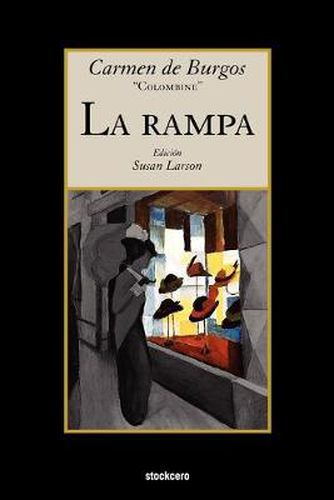Readings Newsletter
Become a Readings Member to make your shopping experience even easier.
Sign in or sign up for free!
You’re not far away from qualifying for FREE standard shipping within Australia
You’ve qualified for FREE standard shipping within Australia
The cart is loading…






This title is printed to order. This book may have been self-published. If so, we cannot guarantee the quality of the content. In the main most books will have gone through the editing process however some may not. We therefore suggest that you be aware of this before ordering this book. If in doubt check either the author or publisher’s details as we are unable to accept any returns unless they are faulty. Please contact us if you have any questions.
While Carmen de Burgos (Almeria 1867-Madrid 1932) belonged to the Generation of ‘98 in terms of her age, she is really too modern and progressive a figure for this categorization. A journalist, author, translator and progressive feminist intellectual, de Burgos was one of the most widely-read writers of her time. When she died she left a body of work impressive both in its quantity and quality: 12 full length and approximately 57 short novels. La rampa (1917) is the second full-length novel by Carmen de Burgos, and is dedicated to all of the throngs of wounded and lost women who have come to me asking which path they should take, and who have made me feel their tragedy. The Spanish literary canon would remain incomplete if it did not include this urban novel by Carmen de Burgos, that in a highly original female point of view, captures Madrid in the process of modernization. La rampa narrates how modernity brought new possibilities for some middle- and upper-class women, but was ultimately an empty promise for many working-class women living in the city. This critical edition prepared by Susan Larson is accompanied by commentary, an extensive bibliography of works by and about the author, and an introduction that includes biographical information about Carmen de Burgos as well as an urban history of Madrid between 1890 and 1920 meant to frame the work within its urban context.
$9.00 standard shipping within Australia
FREE standard shipping within Australia for orders over $100.00
Express & International shipping calculated at checkout
This title is printed to order. This book may have been self-published. If so, we cannot guarantee the quality of the content. In the main most books will have gone through the editing process however some may not. We therefore suggest that you be aware of this before ordering this book. If in doubt check either the author or publisher’s details as we are unable to accept any returns unless they are faulty. Please contact us if you have any questions.
While Carmen de Burgos (Almeria 1867-Madrid 1932) belonged to the Generation of ‘98 in terms of her age, she is really too modern and progressive a figure for this categorization. A journalist, author, translator and progressive feminist intellectual, de Burgos was one of the most widely-read writers of her time. When she died she left a body of work impressive both in its quantity and quality: 12 full length and approximately 57 short novels. La rampa (1917) is the second full-length novel by Carmen de Burgos, and is dedicated to all of the throngs of wounded and lost women who have come to me asking which path they should take, and who have made me feel their tragedy. The Spanish literary canon would remain incomplete if it did not include this urban novel by Carmen de Burgos, that in a highly original female point of view, captures Madrid in the process of modernization. La rampa narrates how modernity brought new possibilities for some middle- and upper-class women, but was ultimately an empty promise for many working-class women living in the city. This critical edition prepared by Susan Larson is accompanied by commentary, an extensive bibliography of works by and about the author, and an introduction that includes biographical information about Carmen de Burgos as well as an urban history of Madrid between 1890 and 1920 meant to frame the work within its urban context.